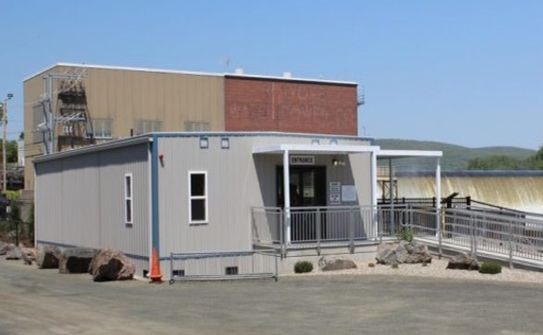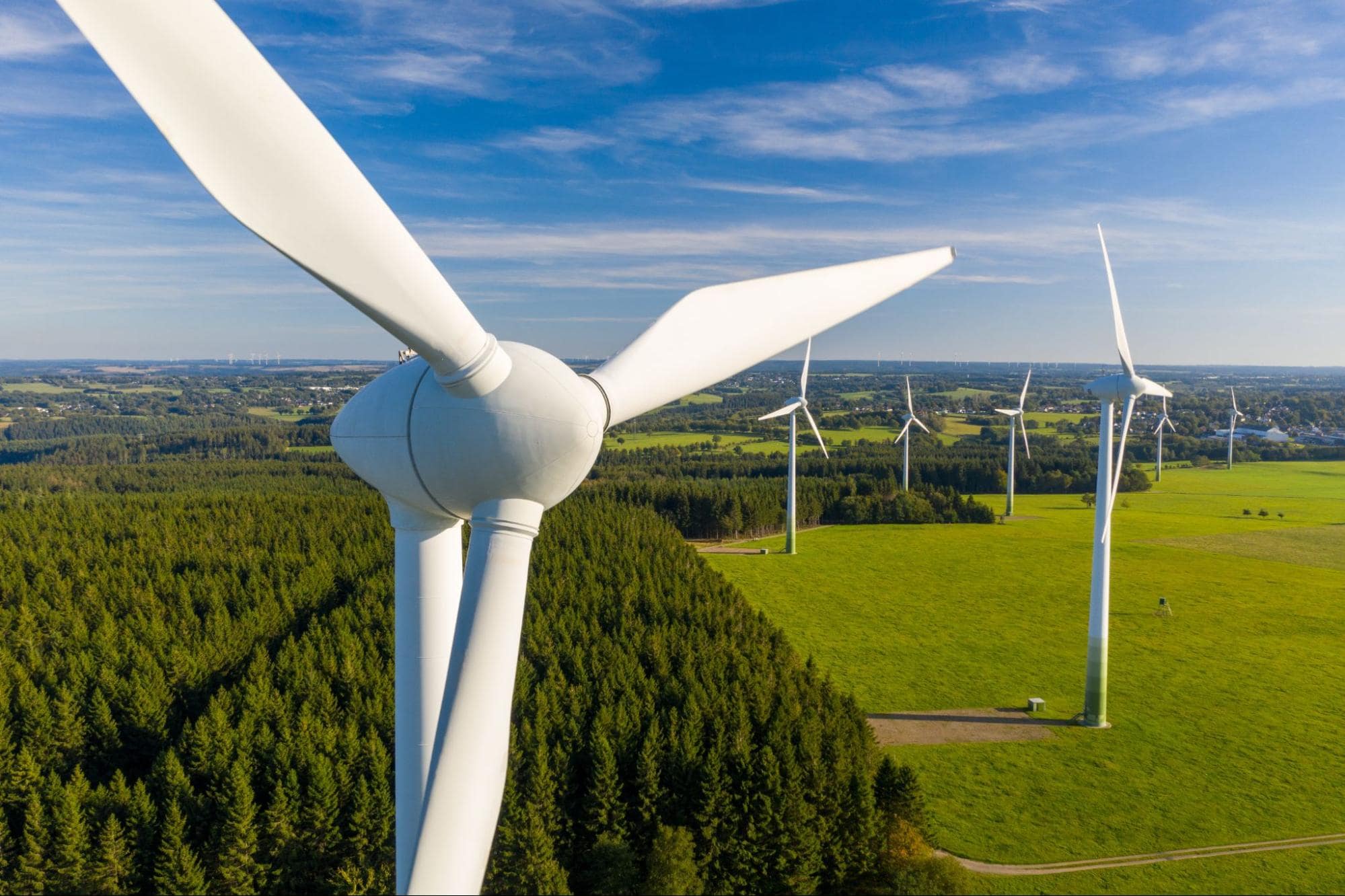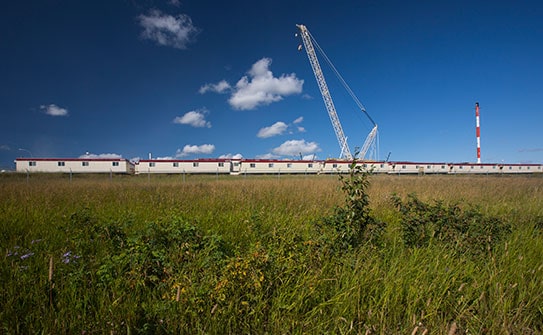Alternative Energy & Modular Buildings: A Green Solution
Climate change and global warming are at the forefront of our concerns now more than ever. We saw pollution levels drop and wildlife flourishes in ways we haven’t seen in decades during the 2020 pandemic. Now, we are clearly seeing the negative impacts on the environment and the dangers these bring to future generations.
Alternative energy companies are booming today, with wind and solar industries leading the charge for a clean energy revolution. This blog will outline everything you need to know about renewable energy, including LEED in construction.

What is Renewable Energy?
Renewable energy, often referred to as clean energy, comes from natural resources that are continuously replenished. Although they are virtually inexhaustible, they are dependent upon weather conditions.
Canada’s geography makes it an ideal area to produce renewable energy. Currently, reusable energy accounts for 18.9% of Canada’s total primary energy supply. Making this country a world leader in renewable energy use.
Canada's Largest Renewable Resource: Hydroelectricity
A majority of the 15,000 dams in Canada were made as components of hydroelectric projects. With the number of projects and running water in Canada, the country is the second-largest producer of hydroelectricity. This resource accounts for 59.3% of Canada’s total electricity production.
A lot of provinces rely on hydroelectricity. In fact, 98% of Quebec’s electricity generation comes from hydroelectric. Other provinces such as Newfoundland, British Columbia, Manitoba, and Prince Edward Island rely on hydroelectric for up to 95% of their electricity.

Benefits of Wind Energy
Wind energy is a prominent renewable energy source in Canada. Using wind to generate electricity emits no greenhouse gases, no air or water pollution, and no toxic or hazardous waste.
In Canada, a large majority of wind turbines are set up onshore in a large capacity that feeds directly into the electricity grid. The largest wind turbine farm is located in Vulcan County, Alberta and it is made of 166 wind turbines.
Annual avian mortality from collisions with turbines is a much smaller percentage than mortality from power lines. The wind industry has been testing methods that potentially reduce bat mortality by more than 50%.
Facts About Solar Energy
Solar power is energy that is sourced by the sun and converted into electrical or thermal energy. Not only is solar power a sustainable resource, but it is also the cleanest and most abundant renewable resource available today.
Even though Canada is known to have short days and long winters, solar energy can still be a valuable resource to reduce greenhouse gas emissions. The use of solar energy has become significantly more cost-effective. Because of this, solar has been used within the residential realm as well as throughout various commercial industries.
Other forms of alternative energy include tidal energy, biomass energy, and geothermal power, just to name a few. But if there’s one thing these energy industries have in common, it’s that they can benefit from the usage of green modular buildings for their operations.
What is LEED?
LEED stands for Leadership in Energy and Environmental Design and is an international standard for sustainable and green building. There are six areas of performance LEED looks for in buildings that attribute to better human and environmental health.
- Location and Transportation
- Sustainable Site Development
- Water Savings
- Energy Efficiency
- Materials Selection
- Indoor Environmental Quality
Currently, buildings account for 30% of greenhouse gas emissions and consume up to 70% of municipal water. As an organization, LEED helps companies build with the intent to reduce emissions and landfill waste, save water, and conserve energy.
Benefits of Building Green
The research LEED has done shows that green buildings are not only better for the environment, but also better for your employees. Because of the increased benefits of this type of building, they are a great long-term investment.
Human Health. Sustainable buildings provide better air quality with lower concentrations of CO2 and volatile organic compounds. When a building has better ventilation, employees experience higher productivity levels and fewer sick days.
Environmental. One of the more obvious benefits of sustainable construction is the reduced amount of water, energy, and natural resources used during the construction process. Generally, LEED-certified buildings produce 25% less energy and 11% less water compared to their conventional counterparts.
Economic. Although the upfront costs of a green building may be more expensive, you’ll ultimately save money in the long run because they’re more efficient. Additionally, Canada’s initiatives toward sustainable buildings will continue to create more jobs. It’s projected that by 2030, green construction will account for 1.5 million jobs and $150 billion in GDP.
Green Modular Buildings for Alternative Energy Industries

Modular buildings are ideal for alternative energy companies because they are environmentally friendly in nature. In fact, modular building construction continues to be a front-runner in the field of green building practices and sustainability.
This is due to the way they are manufactured in facilities, rather than on-site construction. In a controlled environment, modular buildings are still able to be built to code and a high standard. Below, we highlight some of the top benefits of green modular buildings.
1. Less Material Waste - Each year, 35% of landfill waste comes from construction methods. Fortunately, with modular, this is eliminated because of the way they are manufactured in a controlled environment.
2. Less Moisture Damage - Modular buildings are constructed in a climate-controlled setting using dry materials. The potential for high levels of moisture being trapped in the new construction is all but eliminated, unlike traditional work sites.
3. Recyclable - Green modular buildings can be reused time and time again, and even transported to different locations. Their adaptability and reusable nature are great for alternative energy companies.
4. LEED Construction - Modular buildings can be constructed to meet the highest LEED construction certifications. LEED buildings use less energy, and water, and reduce greenhouse gas emissions. As an added bonus, they also save your organization money.
How Do Alternative Energy Companies Use Modular?
Modular buildings provide energy companies with cost-effective space so that they can have smooth-running operations for their staff and employees. The following are examples of what types of commercial industries can benefit from green modular buildings:
- Administrative Offices
- Project Management Offices
- Security Offices
- In-Plant Manufacturing Offices
- Wellness Clinic Labs
- Breakrooms
- Restrooms
- Locker Rooms
- Training Facilities
- Cafeterias
There are endless options for modular buildings since they can be completely customized. They come in both temporary and permanent building options. They’realso great for remote locations. Additionally, they’re budget-friendly and can be leased, financed, or purchased.
Incorporate LEED in construction processes by using green modular buildings to support your next building project.
Ready to solve your space needs?
Modular buildings are the way to go. Request a quote or contact us today to get the conversation started. We’d love to talk to you about how modular can meet — and exceed — your needs.




